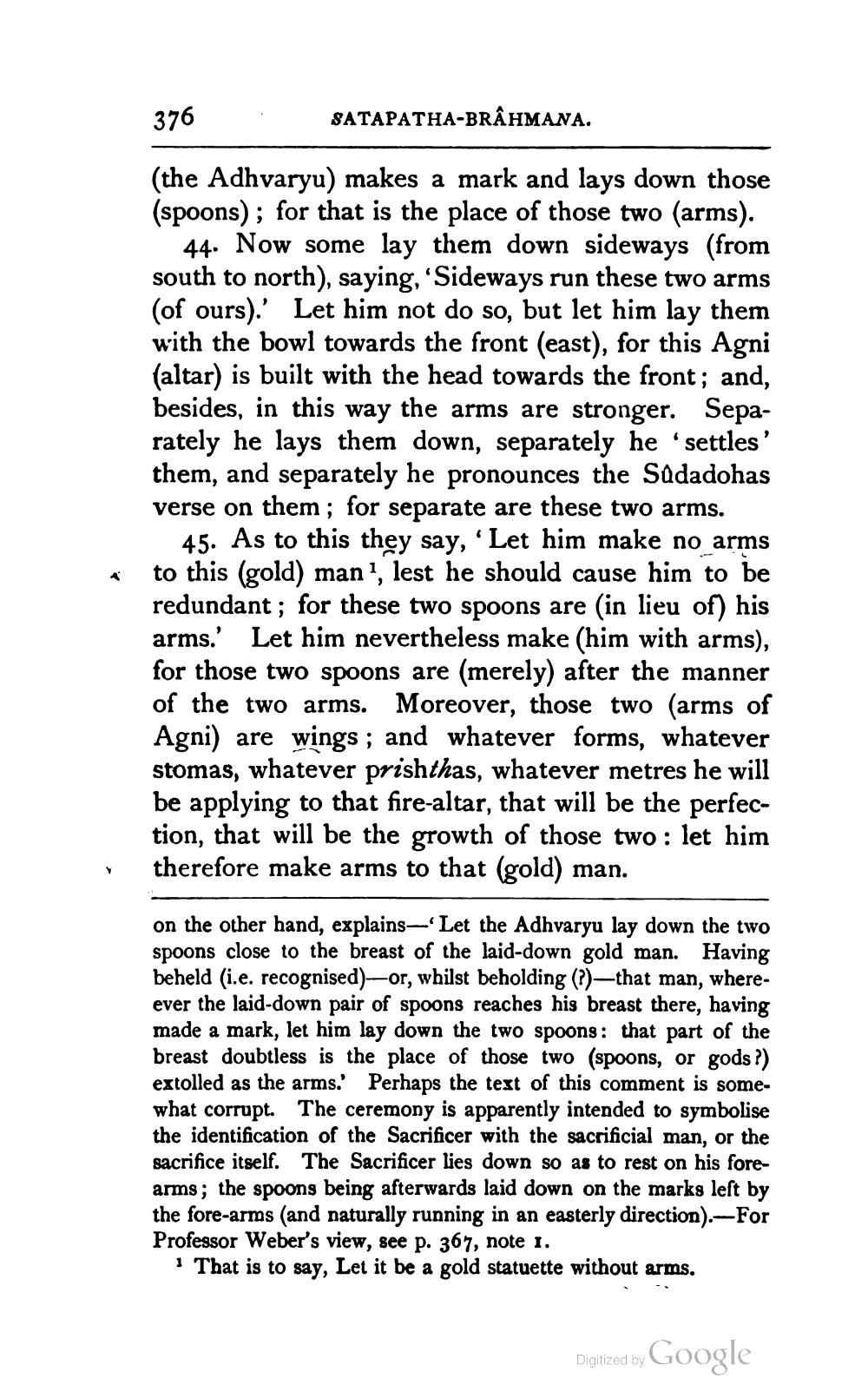________________
ベ
Y
376
(the Adhvaryu) makes a mark and lays down those (spoons); for that is the place of those two (arms).
SATAPATHA-BRAHMANA.
44. Now some lay them down sideways (from south to north), saying, 'Sideways run these two arms (of ours).' Let him not do so, but let him lay them with the bowl towards the front (east), for this Agni (altar) is built with the head towards the front; and, besides, in this way the arms are stronger. Separately he lays them down, separately he 'settles' them, and separately he pronounces the Sûdadohas verse on them; for separate are these two arms.
45. As to this they say, 'Let him make no arms to this (gold) man1, lest he should cause him to be redundant; for these two spoons are (in lieu of) his arms.' Let him nevertheless make (him with arms), for those two spoons are (merely) after the manner of the two arms. Moreover, those two (arms of Agni) are wings; and whatever forms, whatever stomas, whatever prishthas, whatever metres he will be applying to that fire-altar, that will be the perfection, that will be the growth of those two: let him therefore make arms to that (gold) man.
on the other hand, explains-'Let the Adhvaryu lay down the two spoons close to the breast of the laid-down gold man. Having beheld (i.e. recognised)-or, whilst beholding (?)—that man, whereever the laid-down pair of spoons reaches his breast there, having made a mark, let him lay down the two spoons: that part of the breast doubtless is the place of those two (spoons, or gods?) extolled as the arms. Perhaps the text of this comment is somewhat corrupt. The ceremony is apparently intended to symbolise the identification of the Sacrificer with the sacrificial man, or the sacrifice itself. The Sacrificer lies down so as to rest on his forearms; the spoons being afterwards laid down on the marks left by the fore-arms (and naturally running in an easterly direction).--For Professor Weber's view, see p. 367, note 1.
1 That is to say, Let it be a gold statuette without arms.
Digitized by
Google




